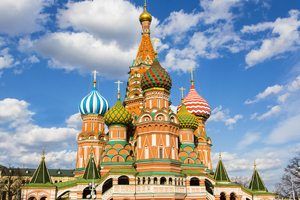
Meet the Normans primary resource
Learn about the Norman conquest of England
This primary resource introduces children to the Normans and how they came to rule the British Isles. Discover the types of building, words, and hairstyles they brought to Britain. Who exactly were the Normans? Why did they invade British shores? What is the Domesday Book?
Pupils will learn about the Norman conquest of England, and how William the Conqueror eventually took the throne after Edward the Confessor’s death, in our National Geographic Kids’ Normans primary resource sheet.
The teaching resource can be used in study group tasks for learning about the changes that the Normans oversaw in Britain, as a printed handout for each pupil to review and annotate, or for display on the interactive whiteboard for class discussion.
Activity: Ask the children to use the information in the comic and their own research to create their own tapestry-style design depicting the Battle of Hastings. Pupils could work together as a class to achieve this, and display the tapestry as a wall display. Pupils could imagine they have travelled back in time and write a diary entry from the point of view of an Anglo Saxon experiencing the changes brought in by King William. Ask children to sketch a Norman church or cathedral found near to where they live.
N.B. The following information for mapping the resource documents to the school curriculum is specifically tailored to the English National Curriculum and Scottish Curriculum for Excellence. We are currently working to bring specifically tailored curriculum resource links for our other territories; including South Africa, Australia and New Zealand. If you have any queries about our upcoming curriculum resource links, please email: schools@ngkids.co.uk
This History primary resource assists with teaching the following History objectives from the National Curriculum:
- Know and understand the history of these islands as a coherent, chronological narrative, from the earliest times to the present day: how people’s lives have shaped this nation and how Britain has influenced and been influenced by the wider world
- Know and understand the history of these islands as a coherent, chronological narrative, from the earliest times to the present day: how people’s lives have shaped this nation and how Britain has influenced and been influenced by the wider world.
- Gain historical perspective by placing their growing knowledge into different contexts, understanding the connections between local, regional, national and international history; between cultural, economic, military, political, religious and social history; and between short- and long-term timescales.
National Curriculum Key Stage 1 History objective:
- Pupils should be taught significant historical events, people and places in their own locality
National Curriculum Key Stage 2 History objective:
Pupils should be taught about:
- The Viking and Anglo-Saxon struggle for the Kingdom of England to the time of Edward the Confessor
- A study of an aspect or theme in British history that extends pupils’ chronological knowledge beyond 1066
This History primary resource assists with teaching the following Social Studies Second level objective from the Scottish Curriculum for Excellence:
- I can discuss why people and events from a particular time in the past were important, placing them within a historical sequence
- I can compare and contrast a society in the past with my own and contribute to a discussion of the similarities and differences
Download primary resource
More Like

Russia facts

Check out our awesome photography tips!

Plastic in the ocean









LEAVE A COMMENT
THANK YOU
Your comment will be checked and approved shortly.
WELL DONE,
YOUR COMMENT
HAS BEEN ADDED!
COMMENTS
Cool
CUSTOMIZE YOUR AVATAR